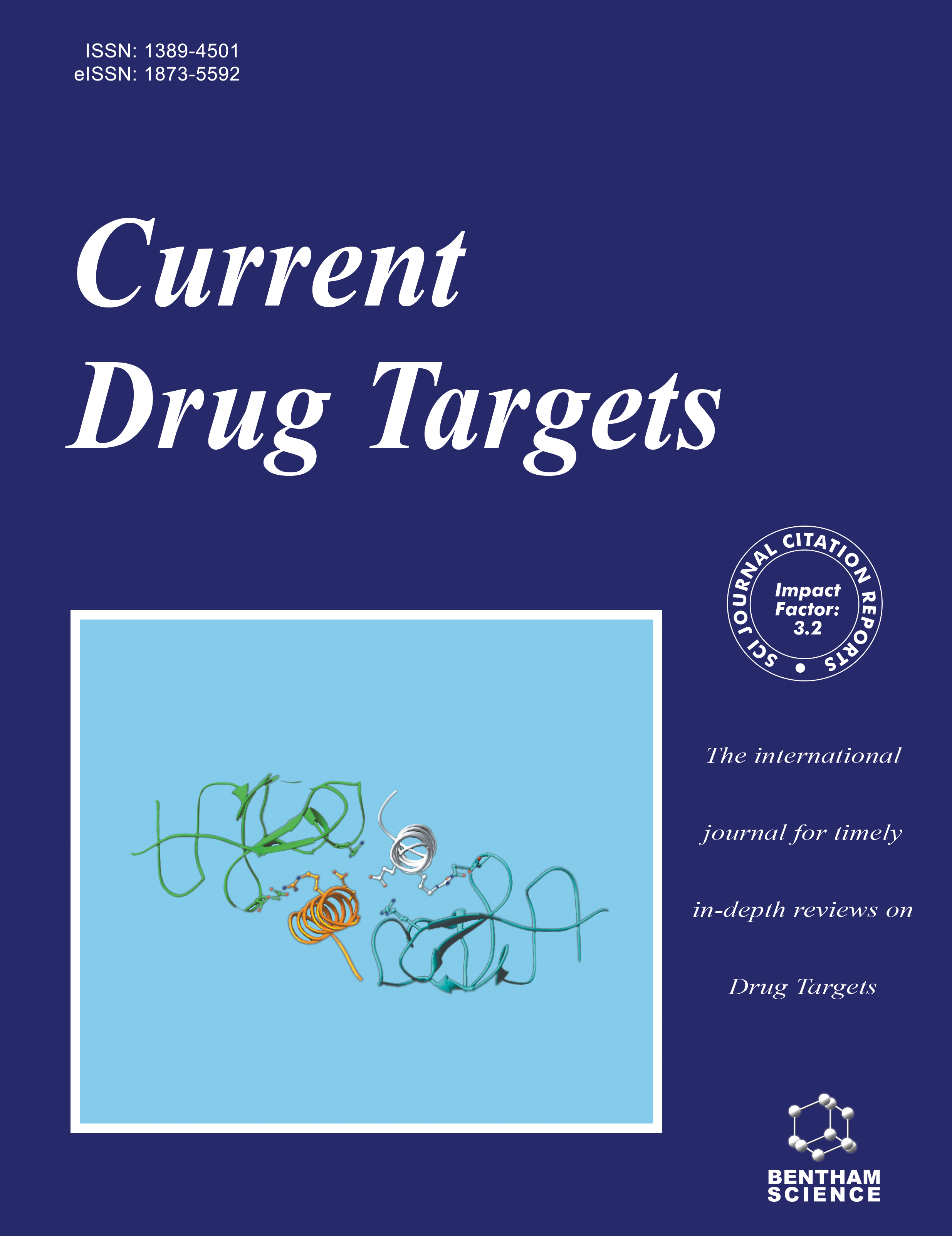- Home
- A-Z Publications
- Current Drug Targets
- Previous Issues
- Volume 21, Issue 1, 2020
Current Drug Targets - Volume 21, Issue 1, 2020
Volume 21, Issue 1, 2020
-
-
Bioinformatics Approaches for Anti-cancer Drug Discovery
More LessAuthors: Kening Li, Yuxin Du, Lu Li and Dong-Qing WeiDrug discovery is important in cancer therapy and precision medicines. Traditional approaches of drug discovery are mainly based on in vivo animal experiments and in vitro drug screening, but these methods are usually expensive and laborious. In the last decade, omics data explosion provides an opportunity for computational prediction of anti-cancer drugs, improving the efficiency of drug discovery. High-throughput transcript Read More
-
-
-
Computational and Pharmacogenomic Insights on Hypertension Treatment: Rational Drug Design and Optimization Strategies
More LessBackground: Hypertension is a prevalent cardiovascular complication caused by genetic and nongenetic factors. Blood pressure (BP) management is difficult because most patients become resistant to monotherapy soon after treatment initiation. Although many antihypertensive drugs are available, some patients do not respond to multiple drugs. Identification of personalized antihypertensive treatments is a key for better Read More
-
-
-
Advances in Current Diabetes Proteomics: From the Perspectives of Label-free Quantification and Biomarker Selection
More LessAuthors: Jianbo Fu, Yongchao Luo, Minjie Mou, Hongning Zhang, Jing Tang, Yunxia Wang and Feng ZhuBackground: Due to its prevalence and negative impacts on both the economy and society, the diabetes mellitus (DM) has emerged as a worldwide concern. In light of this, the label-free quantification (LFQ) proteomics and diabetic marker selection methods have been applied to elucidate the underlying mechanisms associated with insulin resistance, explore novel protein biomarkers, and discover innovative therapeutic protein Read More
-
-
-
Structural and Mechanistic Insights of CRAC Channel as a Drug Target in Autoimmune Disorder
More LessAuthors: Sampath Bhuvaneshwari and Kavitha SankaranarayananBackground: Calcium (Ca2+) ion is a major intracellular signaling messenger, controlling a diverse array of cellular functions like gene expression, secretion, cell growth, proliferation, and apoptosis. The major mechanism controlling this Ca2+ homeostasis is store-operated Ca2+ release-activated Ca2+ (CRAC) channels. CRAC channels are integral membrane protein majorly constituted via two proteins, the stromal intera Read More
-
-
-
Computational Strategy Revealing the Structural Determinant of Ligand Selectivity towards Highly Similar Protein Targets
More LessAuthors: Hanxun Wang, Yinli Gao, Jian Wang and Maosheng ChengBackground: Poor selectivity of drug candidates may lead to toxicity and side effects accounting for as high as 60% failure rate, thus, the selectivity is consistently significant and challenging for drug discovery. Objective: To find highly specific small molecules towards very similar protein targets, multiple strategies are always employed, including (1) To make use of the diverse shape of binding pocket to avoid steric bump; (2) To in Read More
-
-
-
Circulating Exosomes and Their Role in Stroke
More LessStroke is an acute neurologic disorder which can be life-threatening if left untreated or diagnosed late. Various detecting techniques including neurologic imaging of the brain by computed tomography or magnetic resonance imaging can facilitate diagnosis of stroke. However, according to the recent advances in molecular detection techniques, new diagnostic and prognostic markers have emerged. Exosomes as an extra c Read More
-
-
-
p19INK4d: More than Just a Cyclin-Dependent Kinase Inhibitor
More LessAuthors: Xu Han, Yijin Kuang, Huiyong Chen, Ting Liu, Ji Zhang and Jing LiuCyclin-dependent kinase inhibitors (CDKIs) are important cell cycle regulators. The CDKI family is composed of the INK4 family and the CIP/KIP family. p19INK4d belongs to the INK4 gene family and is involved in a series of normal physiological activities and the pathogenesis of diseases. Many factors play regulatory roles in the p19INK4d gene expression at the transcriptional and posttranscriptional levels. p19INK4d not o Read More
-
Volumes & issues
-
Volume 26 (2025)
-
Volume 25 (2024)
-
Volume 24 (2023)
-
Volume 23 (2022)
-
Volume 22 (2021)
-
Volume 21 (2020)
-
Volume 20 (2019)
-
Volume 19 (2018)
-
Volume 18 (2017)
-
Volume 17 (2016)
-
Volume 16 (2015)
-
Volume 15 (2014)
-
Volume 14 (2013)
-
Volume 13 (2012)
-
Volume 12 (2011)
-
Volume 11 (2010)
-
Volume 10 (2009)
-
Volume 9 (2008)
-
Volume 8 (2007)
-
Volume 7 (2006)
-
Volume 6 (2005)
-
Volume 5 (2004)
-
Volume 4 (2003)
-
Volume 3 (2002)
-
Volume 2 (2001)
-
Volume 1 (2000)
Most Read This Month
Article
content/journals/cdt
Journal
10
5
false
en


